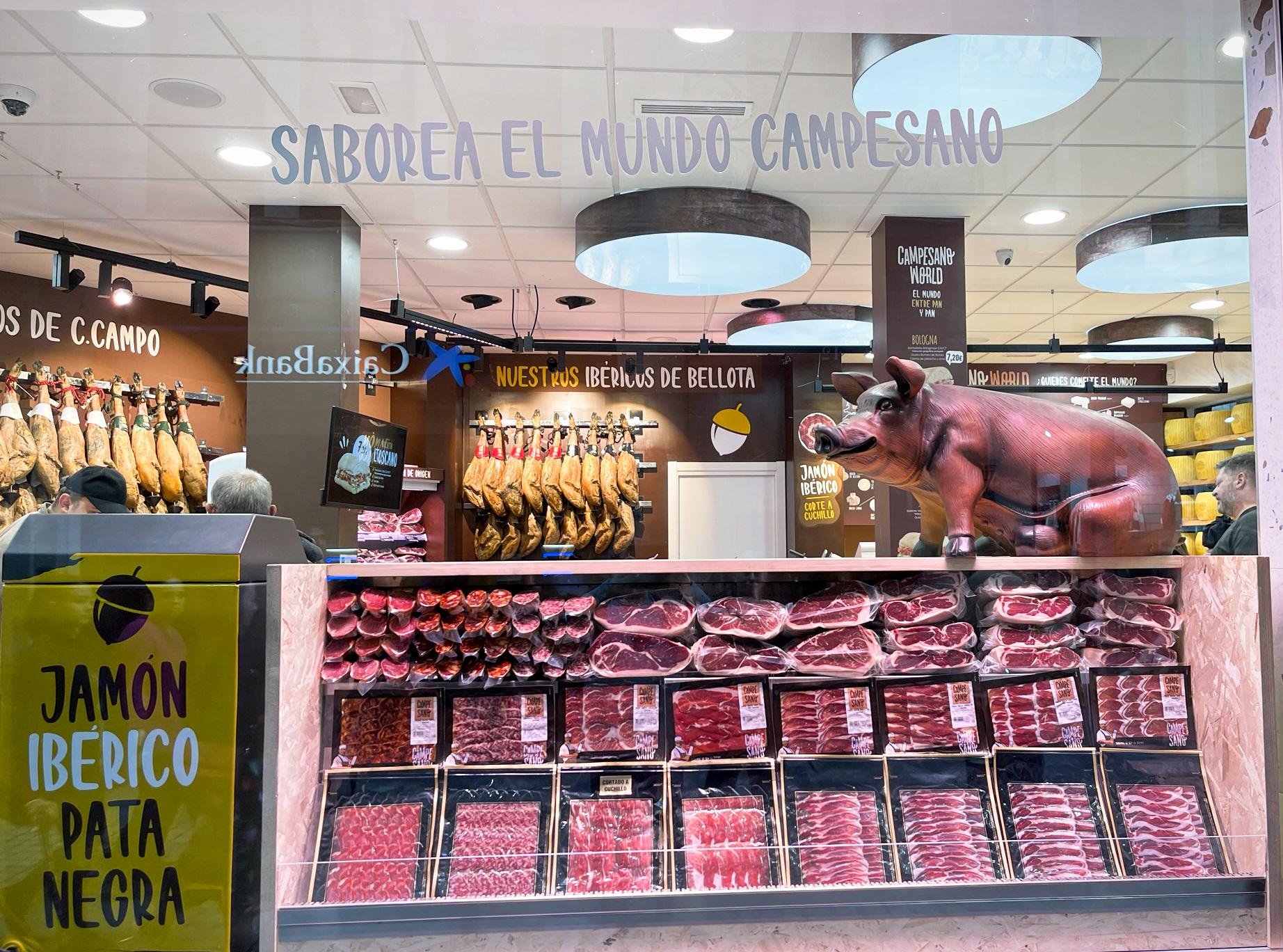Table of Contents
- Understanding the Roots and Impacts of Food Insecurity
- Exploring Demographic Vulnerabilities and Solutions
- Effective Policy Measures for Combating Hunger
- Community-Based Strategies for Sustainable Food Access
- Innovative Approaches to Mitigate Food Scarcity Challenges
- Q&A
- Wrapping Up


Understanding the Roots and Impacts of Food Insecurity
At its core, food insecurity is an intricate challenge that transcends the simple absence of food on the table. It stems from a complex interweaving of economic, social, and environmental factors that vary around the globe. These roots are deeply embedded in systemic issues such as poverty, unemployment, and inequitable access to resources. Weather patterns and climate change further complicate the scenario, influencing agriculture and food availability. Understanding these layers helps frame the solutions needed to address this multifaceted issue effectively.
The impacts of food insecurity ripple through various aspects of life, affecting the health and development of individuals and communities. Nutritional deficiencies lead to numerous health problems, including stunted growth in children and weakened immune systems. Moreover, the psychological effects, such as anxiety and stress related to the uncertainty of acquiring enough food, hinder one’s ability to thrive. Families facing food insecurity often face difficult choices, such as:
- Choosing between food and medical care
- Sacrificing education expenses for meals
- Enduring nutritional compromises that can affect long-term health
When exploring potential solutions, it is vital to consider both immediate relief efforts and long-term systemic changes. Creating sustainable food systems and implementing policies that promote equitable access can transform communities. Table-based research and innovative urban agriculture initiatives might offer pathways to mitigate this issue. Let’s look at some key considerations:
| Approach | Potential Impact |
|---|---|
| Community Gardens | Enhance local food availability |
| Policies Supporting Affordable Nutrition | Improve long-term food security |


Exploring Demographic Vulnerabilities and Solutions
In examining the intersection of food insecurity and demographic vulnerabilities, it’s crucial to acknowledge how certain groups are disproportionately affected. Low-income households, single-parent families, and the elderly often face higher risks due to limited resources and access to nutritious food. These vulnerabilities are compounded by factors such as geographic isolation in rural areas, where grocery stores are few and far between. Bridging these gaps requires a multifaceted approach, including policy reforms, improved supply chains, and community support systems.
- Employment Opportunities: Enhancing job prospects can elevate household income, reducing food insecurity.
- Education and Training: Programs focusing on nutrition education can empower individuals to make informed food choices.
- Healthcare Access: Addressing health disparities ensures communities are not choosing between food and medical expenses.
Innovative solutions are essential to mitigate these vulnerabilities. Community gardens, for example, are not only a sustainable food source but also help foster community resilience. Additionally, leveraging technology, such as mobile apps that connect consumers with surplus food from local stores, can play a vital role.
| Solution | Impact |
|---|---|
| Community Gardens | Increased self-sufficiency and local food access |
| Surplus Food Apps | Reduced food waste and greater food access |


Effective Policy Measures for Combating Hunger
Addressing the complex challenge of hunger requires multifaceted policy measures that can effectively support vulnerable populations. Governments can start by implementing comprehensive social protection programs. These programs should ensure regular food assistance through initiatives such as food vouchers or direct transfers to low-income families. By tailoring support to specific community needs, these policies can uplift those facing extreme food scarcity, fostering resilience and reducing dependency on unpredictable external aid.
Another vital measure is the promotion of sustainable agricultural practices. Encouraging local farmers to adopt innovative techniques such as crop rotation, agroforestry, and organic farming can significantly enhance food security. Additionally, introducing incentives for using environmentally-friendly methods ensures the long-term viability of food supplies. The government can facilitate this through subsidies, training programs, and infrastructure development, creating a robust agricultural sector that is both sustainable and inclusive.
Enhancing collaborative efforts among stakeholders, including non-governmental organizations, private sectors, and local communities, is imperative. These partnerships should focus on sharing knowledge, resources, and technological innovations. Establishing community-based food networks can also create a buffer against food shortages, ensuring that surplus produce is redistributed rather than wasted.
| Policy Measure | Impact |
|---|---|
| Social Protection Program | Direct support to vulnerable households |
| Sustainable Agriculture | Enhanced food production and equity |
| Stakeholder Collaboration | Shared resources and improved food networks |


Community-Based Strategies for Sustainable Food Access
Addressing food insecurity requires solutions that integrate the uniqueness of each community. Implementing gardens in urban areas is an effective strategy for enhancing access to fresh produce. These community gardens utilize underused spaces, engaging locals to grow their own fruits and vegetables. Benefits include improving nutritional intake, fostering social connections, and empowering residents with new skills. Areas that embrace these gardens often witness a transformation, not just in greenery but also in the social fabric and health of local populations.
Another impactful approach is the development of cooperative grocery stores. Traditional supply chains often overlook disadvantaged neighborhoods, leading to food deserts. Creating cooperative stores allows communities to stock shelves with affordable, culturally relevant options. Key features of these cooperatives include:
- Member ownership and decision-making.
- Promotion of local produce and products.
- Education programs on nutrition and cooking.
Additionally, mobile food initiatives provide a flexible solution to the accessibility gap. These programs deploy trucks equipped with fresh produce and pantry staples to underserved areas. A typical mobile food initiative might offer:
| Schedule | Products Available | Community Partners |
|---|---|---|
| Weekly visits | Fresh fruits, vegetables, grains | Local farms, food banks |
| Bi-weekly health workshops | Snap-friendly products | Public health organizations |
These collective efforts, tailored to meet specific community requirements, not only address the immediate necessities but also lay the groundwork for sustaining long-term food security.


Innovative Approaches to Mitigate Food Scarcity Challenges
In the face of dwindling resources and a rapidly growing population, adopting innovative agricultural practices is crucial. One promising solution is vertical farming, which allows crops to be cultivated in stacked layers, often indoors and equipped with controlled-environment agriculture technologies. This method dramatically reduces the distance food travels from farm to plate, minimizing spoilage and transportation costs while maximizing fresh produce availability. Urban settings benefit greatly, transforming unused spaces into green production centers, enhancing local food security.
Another transformative approach is the integration of precision agriculture. By utilizing smart technologies such as drones, sensors, and IoT devices, farmers can optimize water usage, fertilizers, and pesticides with pinpoint accuracy. This method not only conserves vital resources but also boosts crop yields and quality dramatically. It empowers small-scale farmers by granting them access to data-driven insights, thus fostering more sustainable practices that cater to local and global demands.
- Alternative Protein Sources: Introducing insect-based proteins and meat analogs to diversify diets.
- Agroecology: Implementing ecologically sound practices to rejuvenate soil health.
- Blockchain Technology: Enhancing transparency and efficiency in the food supply chain.
| Strategy | Benefit |
|---|---|
| Vertical Farming | Reduces land and water use |
| Precision Agriculture | Maximizes resource efficiency |
| Alternative Proteins | Diversifies dietary options |




0 Comments